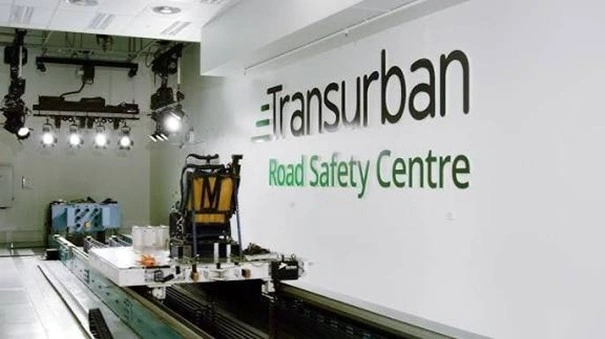Transurban Group has announced today the official results of its euro bond tender offers, reflecting a careful and deliberate mix of managing the near-term debt rollovers and securing long-term funding. The group’s announcement came through Transurban International Limited to the ASX on 25 November 2025.
The offer was related to the company’s euro-denominated debt securities issued under the Euro Medium Term Note Programme and was a part of the overall funding and refinancing strategy.

Transurban confirms euro bond tender results and future debt strategy.
What Is The Purpose Of The Transurban Euro Bond Tender?
The Transurban bond tender offer was set to recall some parts of the two existing euro-denominated notes in advance of their maturity dates. The notes in question were the €500 million 1.75% Fixed Rate Notes maturing in 2028 and the €750 million 3.00% Fixed Rate Notes maturing in 2030.
The company also commented that the purpose of the tender was to improve the debt structure and to gradually prolong the maturity schedule. The Company was represented by Transurban Finance Company Pty Ltd, which assumed the role of Offeror in the Euro Medium Term Note Programme.
This initiative secures Transurban’s position for refinancing while still being able to choose among global debt markets and thus, financial flexibility.
Final Transurban Euro Bond Tender Offer Results Explained
The results of the Euro bond tender were indicative of good demand from the investors for the entire note series. The company took in approximately €259 million of the 2028 Notes and €150 million of the 2030 Notes. The final pro-ration factor for the 2030 Notes was about 57.6389%, which indicates that the investors wanted more than the volume of bonds accepted.
Thus, not all of the tendered bonds were completely accepted, and the investors received their allotments based on the percentage of bonds they tendered. Transurban’s overtly cautious attitude towards capital management rather than aggressive buybacks is evidenced by this manner of acceptance.

Investor demand drives €259m and €150m Transurban note acceptances.
How Does The Secondary Market View The Tender Results?
Evaluating bond tenders from both the size of acceptance and pricing signals is a common practice among market participants. The Euro bond tender results in this case show that the company successfully managed to attract investors while keeping refinancing costs under control.
Infrastructure groups are often the ones that rely heavily on bond rollovers, but Transurban’s partial buyback strategy indicates that the firm is slowly but steadily transitioning to its new funding structure. This, in turn, may make the company’s long-term debt strategy more appealing to investors, as it prevents the sudden pressure of large-scale refinancing.
Transurban Bond Tender And New Issuance Link
The tender was one of the key requirements related to a new euro bond issuance. The firm has stated that the Euro Tender Offers depended on the successful completion of a new euro bond issuance.
The new issuance was priced on 17 November 2025 and is set to be finalised on 26 November 2025, London time. The tender only progressed to final settlement after the new issuance was considered completed. This order of events emphasises that the Transurban euro bond strategy involves not merely a repurchase but also a broader refinancing cycle.

Euro bond tender tied directly to successful new euro issuance.
When Will The Tender Offers Be Settled?
Per the ASX announcement, the tender offers’ anticipated settlement date is 27 November 2025, London time, or soon after, when practically possible. This schedule guarantees that by the end of November 2025, the company’s capital structure will have already absorbed the financial changes. The tender participants will be receiving their allocations and payments according to this settlement timetable.
What Does This Mean For Transurban’s Future Funding?
The Transurban bond tender is a perfect illustration of how big and powerful infrastructure corporations take care of their long-term liabilities while still riding the wave of global interest rate fluctuations. Transurban steps out of the old and into the new funding with good timing when they do a structured tender to retire part of the old debt, as this way they do not have to worry about refinancing pressure all at once in the future when they have their future obligations and funding tools matched.
The strategy also gives support to the capital flexibility as the company keeps running big infrastructure assets in Australia and other parts of the world. The tender does not get rid of all the maturity risk that is coming, but it certainly takes down a lot of the burden for the 2028 and 2030 notes.
This structured refinancing approach really helps Transurban’s position regarding long-term funding, and at the same time, it keeps the debt programmes of the company open for investors to be involved.
Also Read: Transurban €500M Bond Issuance Boosts Capital Strategy
FAQs
- What were the final Transurban euro bond tender acceptance amounts?
The company accepted approximately €259 million for the 2028 Notes and €150 million for the 2030 Notes.
- What was the pro-ration factor for the 2030 notes?
The final pro-ration factor for the 2030 Notes was approximately 57.6389%.
- When is the tender settlement date?
The settlement is expected on 27 November 2025, London time, or as soon as reasonably practicable thereafter.
- Why did Transurban conduct this bond tender?
The tender was conducted to optimise Transurban’s debt profile and manage future maturities more effectively.











